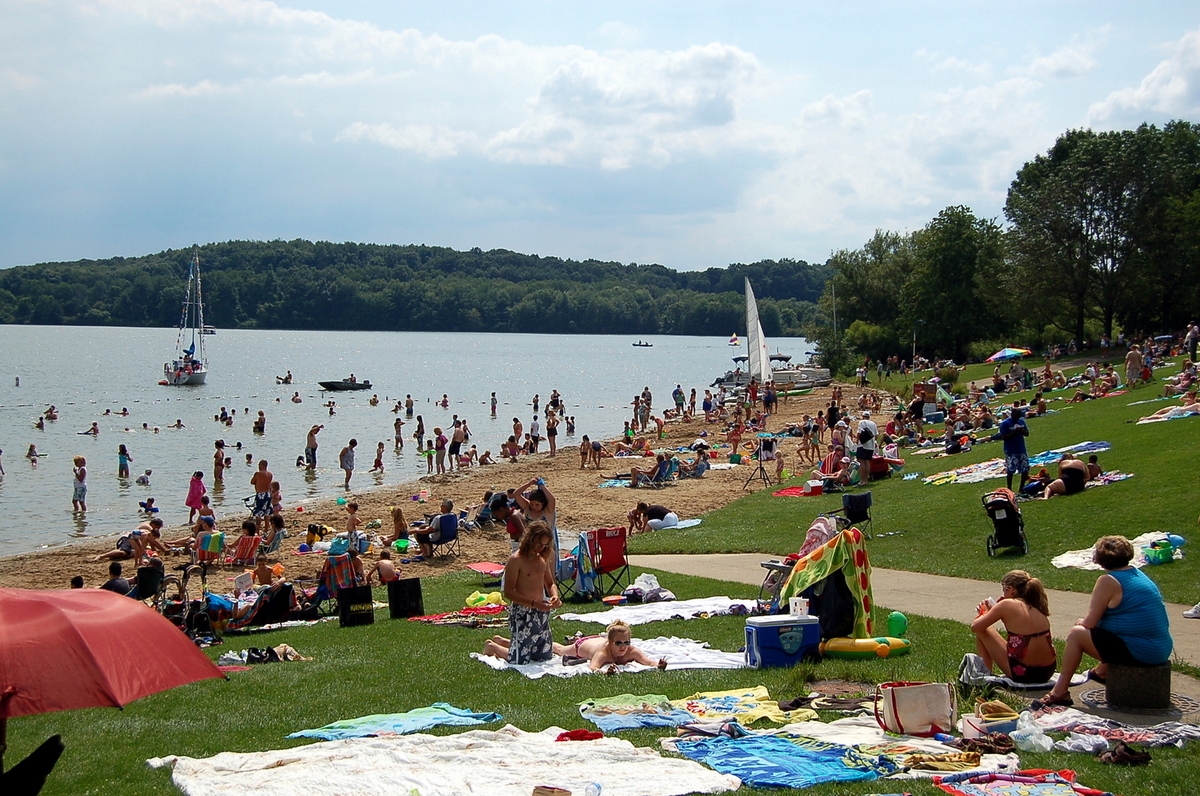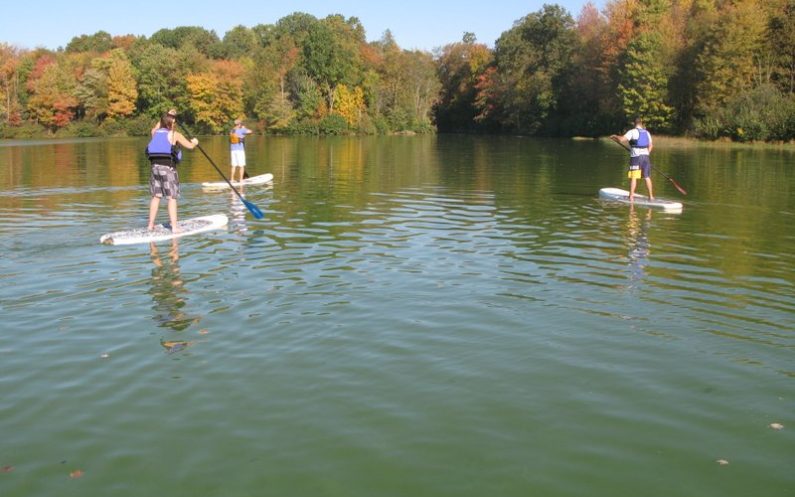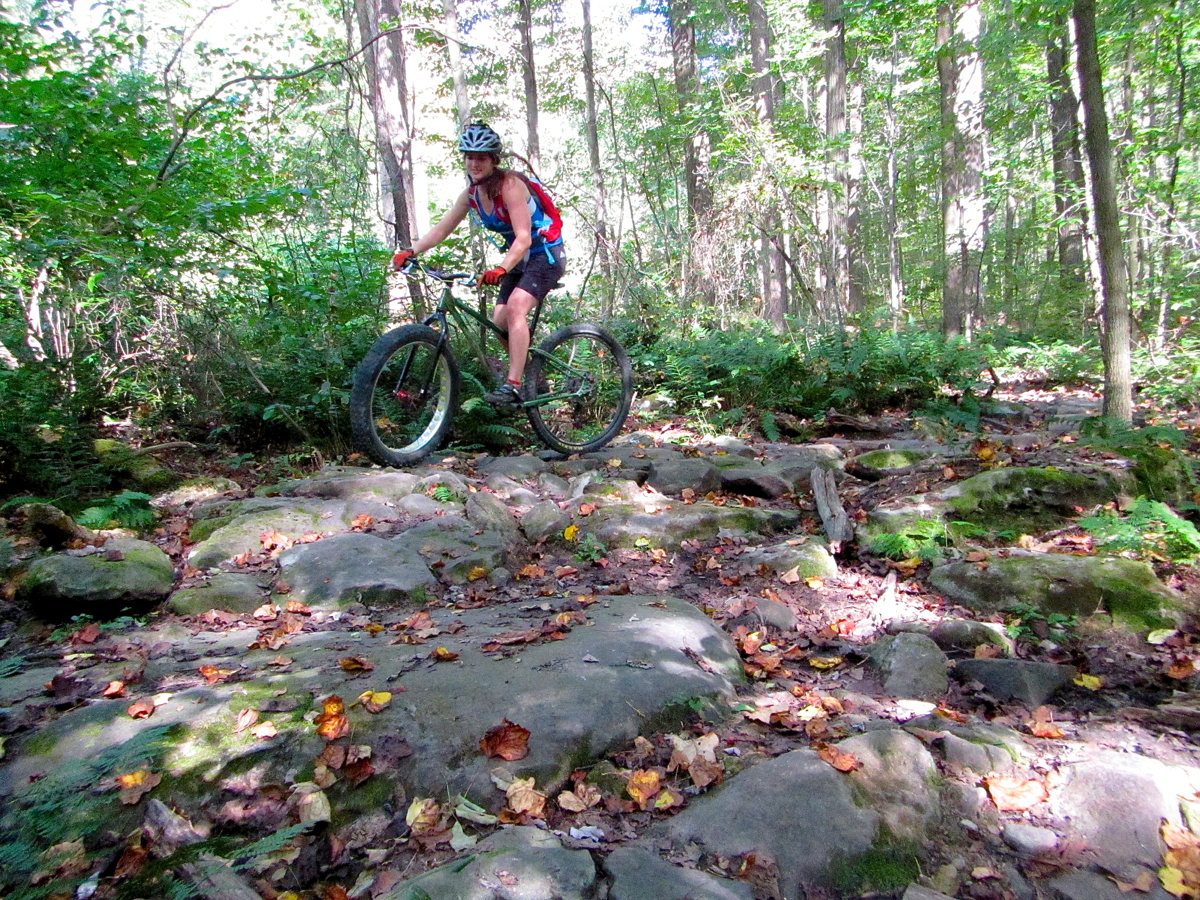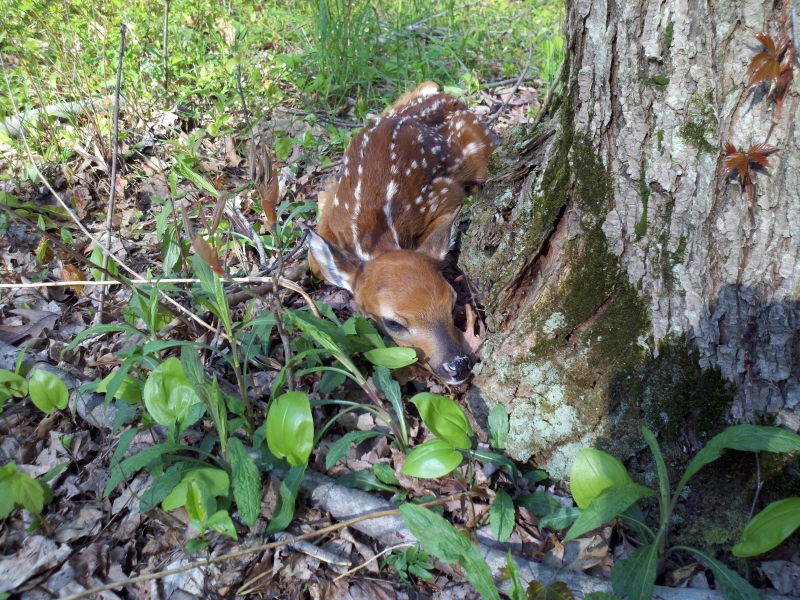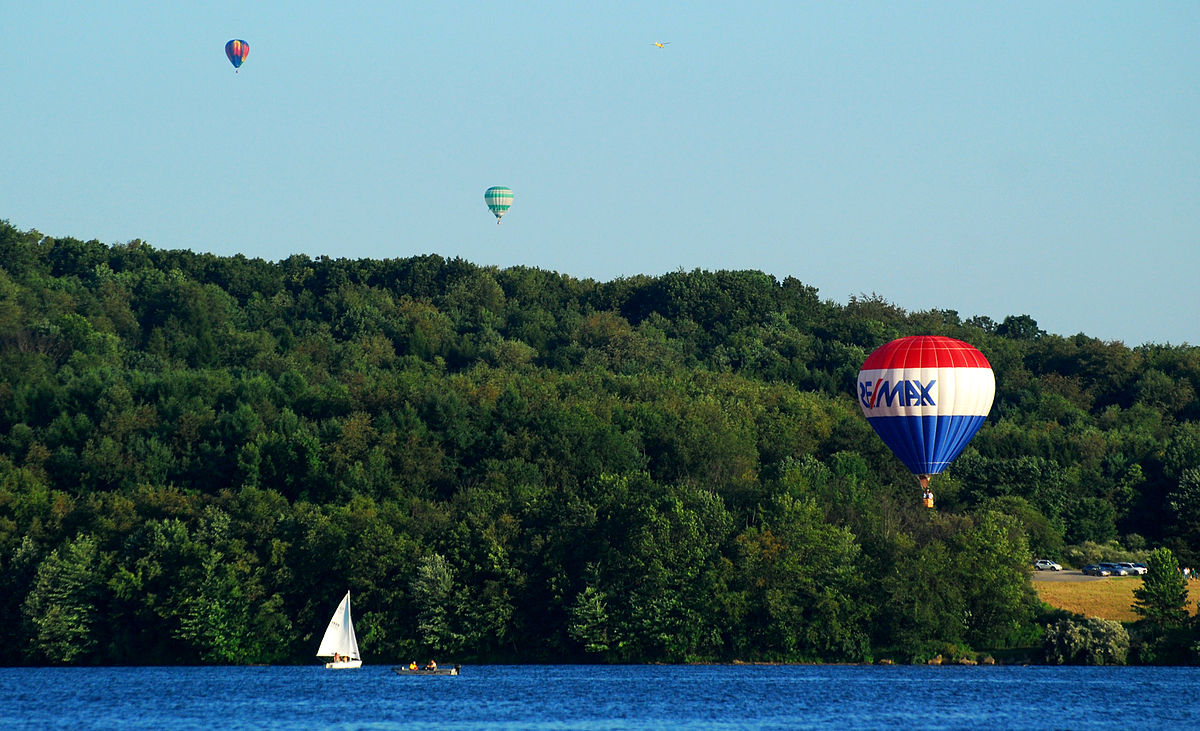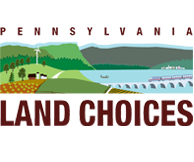Moraine State Park
Location: Butler County
Organization: Western Pennsylvania Conservancy
A convergence of glaciers 14,000 years ago gave Muddy Creek its hills and valleys. Industry gave it its scars.
A meeting of minds in the 1950s transformed the land yet again. Community leaders envisioned a beautiful park rising from Muddy Creek Valley’s mine-scarred surface. And they spent endless hours to make it happen. Half a century later, Moraine State Park was one of Pennsylvania’s most-visited parks.
The Lake that Wasn’t There
The idea of Moraine State Park grew from one man’s vision.
Jane Preston remembers her husband, Dr. Frank Preston, a prominent glass researcher and avid naturalist, becoming enamored with the idea of recreating an ancient lake at Muddy Creek.
Glaciers had once come as far south as the Muddy Creek Valley, dumping Canadian rocks at the end of their reach — a terminal moraine. Water pooled behind the rocks and ice, creating prehistoric lakes. Frank wanted to map the extent of the terminal moraine, which would tell him the ancient lake boundaries.
“The critical thing was having the gas to get out there. He couldn’t do detailed survey work until we could get gas,” Jane explained. Gas was rationed during World War II.
After the war, Frank and Jane would take day trips to Muddy Creek. “I went along to drive and he would tell me where to stop. I’d get out and pick apples. Frank would study rocks. There were fields with Canadian stones, and there were fields of local stones. It was fun.”
Preston’s visits to the valley became routine. And his fascination with the ancient lake grew into a vision of creating a grand state park and recreational lake for the people of western Pennsylvania. “He saw the big picture. He always could,” Jane recalled.
Devastation
Preston sought out a local attorney who had similar values as he. George Kiester was concerned with the past life of the landscape-albeit a much more recent past than Preston. Kiester, who later became Judge Kiester, is a native of Butler County. When he returned from law school to settle down, he saw a countryside he didn’t recognize.
The mining industry had discovered the rich resources tucked into the region’s hills. Quarries and strip mines left voids in the land where woods and fields once lay. Streams were poisoned with mine drainage.
“This area I used to tramp through as a youngster was devastated,” Kiester said. “When I first came back, the mines were all over the place.”
Kiester rallied residents and elected officials from Butler County to Harrisburg to make the industry more responsible. It was this work that attracted the attention of Preston.
“I guess I developed a reputation.”
The two men met daily for lunch, discussing strategy for the creation of “Muddy Creek State Park.”
“He sold me on the concept,” Judge Kiester said. “I was convinced and I still am. We wanted to preserve some of the land for the public good and not have it all be developed.”
The Land Trust
Preston first broached making his vision a reality at a 1948 meeting in Pittsburgh’s Carnegie Museum. There, while discussing scientific matters with friends, the topic turned to the nature of the glacier-carved landscape of Muddy Creek Valley. Preston expressed his feeling that the geological and ecological resource should be shared with others by creating a public park.
He wrote then of his interest in donating land to a park endeavor:
“I acquired only a few miles of railroad track and a few hundred acres in addition, and I offered to transfer these to an organization, whatever organization it might be, willing to accept responsibility for it.”
Three years later, Preston found a place for his holdings with the Western Pennsylvania Conservancy. The group had recently evolved from the Greater Pittsburgh Parks Association to serve all of western Pennsylvania. The Conservancy adopted Preston’s vision, embarking on a campaign to raise funds and buy land in Muddy Creek.
The Conservancy hired Carl Leathers, a man who was familiar with the farmers and other landowners in Muddy Creek Valley. He spent years knocking on doors and making land deals. Much of the valley farmland was too wet to grow crops well. Many a farmer had retirement or a move to better ground on their mind.
Preston too would scour the landscape looking for eager sellers. His hikes now included a new piece of equipment: his checkbook. Preston showered the Conservancy with gifts of land as well as royalties from his oil wells.
While Leathers, Preston, and another early Conservancy member, Dr. Graham Netting, were land-banking the valley, others like Kiester were busy spreading the park vision, speaking at community meetings, Rotary Clubs and anywhere else people might listen.
Public support swelled as did the Conservancy’s dues-paying membership, which mushroomed from 1,000 to six thousand.
But for the bold vision to be realized, local support needed to be translated into state support. Harrisburg had to be convinced to create a state park in the Muddy Creek Valley.
From Private to Public
Kiester and a group of influential men from Butler County risked their lives to gain the state’s commitment. On an early January morning in 1960, ice glazed their path to Harrisburg. Snow plastered their windshield, turning the world white, as the men strove to keep their appointment at the capital.
The determined group reached their destination, impressing Harrisburg with both their arrival and subsequent presentation. State support for the park was had.
Soon, government funding began flowing to complete what Preston and the Conservancy had begun. The Conservancy transferred the 3,000 acres it had acquired to the Commonwealth, and the state set out to fill in the gaps.
The former Pennsylvania Department of Forests and Waters and former Department of Mines and Mineral Industries sealed deep mines, back-filled and graded strip-mined areas, and plugged gas and oil wells. Soil was treated with fertilizer; grass, clover and thousands of trees were planted throughout the property.
Moraine State Park, complete with a recreated ancient lake, opened in 1970.
Since then, millions have come and gazed at Lake Arthur from serene shores. Families and community groups picnic on the broad lawns. Children scamper on the beach and play in the water. Couples bicycle and walk the trails. Boaters unfurl their sails to race across the lake, while anglers hook what lives within.
Even in the early years, Moraine State Park’s popularity surprised the visionaries who labored for its creation. In his book, 50 Years of the Western Pennsylvania Conservancy, Netting wrote:
“All who helped create this park underestimated how greatly it was needed. We envisioned visitor attendance of 200,000 the first year; instead 652,690 came in 1969, even before the park was officially dedicated.”
A million people now visit Moraine State Park each year.
